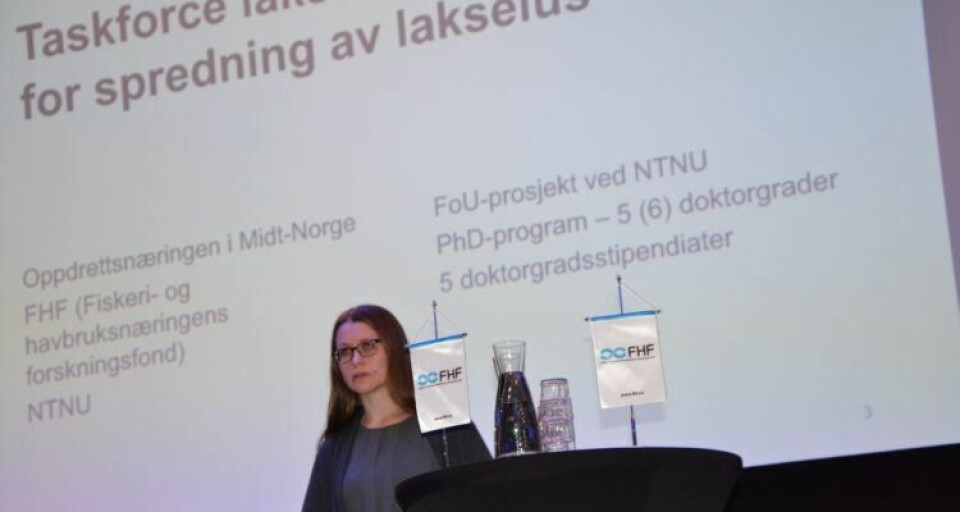
'More lice larvae inside cages with lice skirts'
Researchers from a Norwegian lice 'taskforce' are puzzled by field study results that show more lice larvae inside cages with lice skirts than outside them.
Anna Båtnes, from Trondheim's technical university, NTNU, leads "Taskforce Lice", and says that in several observations they have seen more lice larvae on the inside than on the outside of cages with lice skirts. "We are unsure what this means," she adds.
During the Fisheries and Aquaculture Industry Research Fund (FHF) conference "Prevention and Control of Lice" in Trondheim on Tuesday, Båtnes presented some of the preliminary results from field trials they have conducted in the Taskforce programme.
Net washing
So far, they have looked for lice larvae in biofouling, and whether there are more larvae before or after net washing, as well as the density of planktonic-stage lice larvae per cubic metre of water, inside and outside cages with skirts.
"Before we start, we investigated the locations by taking CTD profiles, where we have salinity, temperature, and more. This is important to see where the lice are," she says.
To determine this, they have taken a net haul with a plankton net from seven metres deep up to the surface, both inside and outside the cage.
Interesting findings
There are clear results in terms of the lice larvae sitting in biofouling.
"We cannot find any indications that the larvae are stuck in biofouling, nor after net washing. There were no differences in the amount of larvae before washing, during washing or a day after washing."
But when it comes to the quantity of lice inside cages versus lice outside, they have some interesting findings, according to Båtnes.
"There we see the difference is that the inside of lice skirts has more larvae than on the outside. These skirts are supposed to protect against these so we're not sure what it means. Perhaps it is [only for] a period of time that that is so."
The background for these results is field trials where the researchers took monthly tests of lice-larvae density per cubic metre at sites with and without lice skirts. They also tested before and after net exchange.
Low concentrations
"We generally had low concentrations of lice larvae in the water in all the tests. After net washing in July compared to those we took in June, the density of lice larvae per cubic metre was slightly higher on the inside of the cage."
The researchers also see a slight tendency that cages with more growth on nets have more larvae on the inside and that with little growth, more lice larvae are seen on the outside.
"However, as said, this trial is not complete and we must see it in conjunction with other parameters."
In another trial where they matched data from three cages, they saw fewer lice in the cages with lice skirts during one measurement.
"But at most times it is mostly more lice on the inside of the net, apart from one month in a locality."
But the differences in density per cubic metre both within and outside the net are very small.
"We are therefore unsure whether it is significant. There have been few lice and it may not have been the best time to work with it."























































